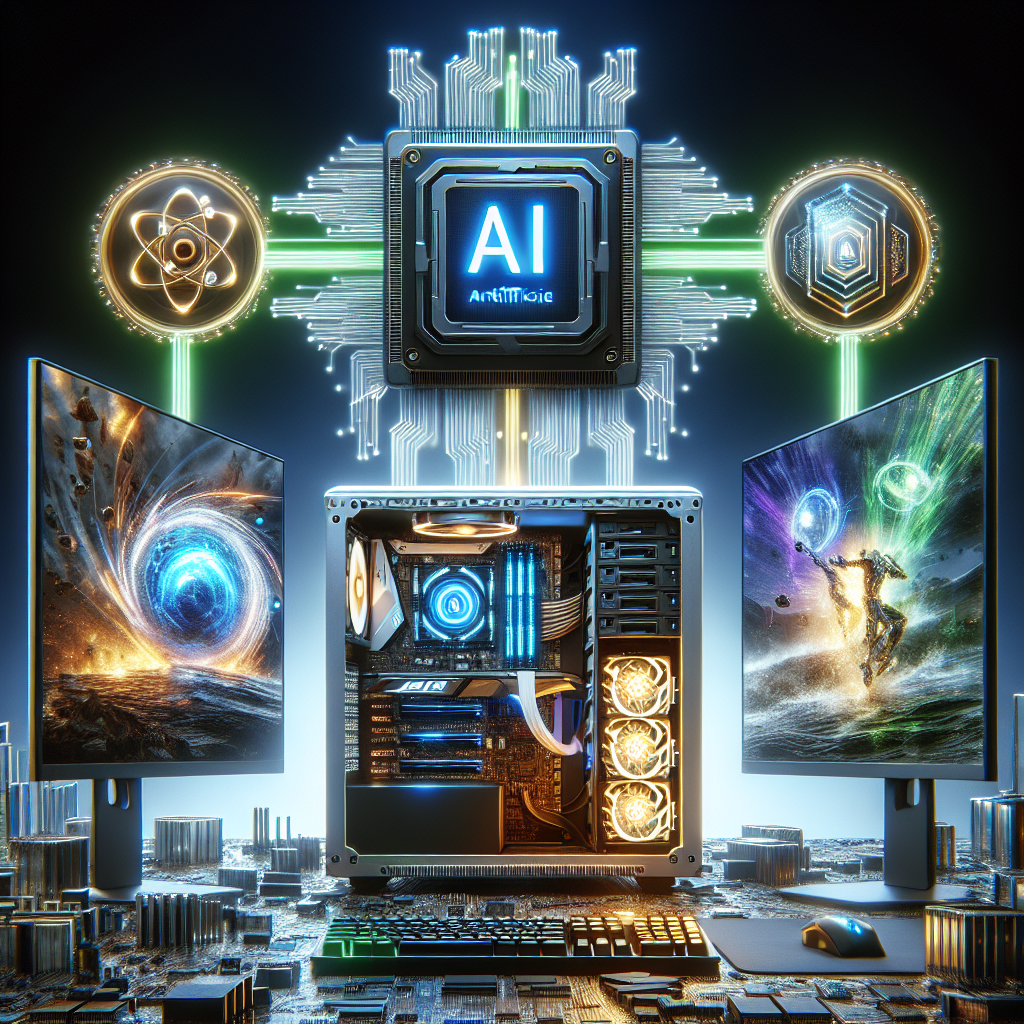AI in PC Gaming: How AI Enhances Performance and Graphics
Introduction
Artificial Intelligence (AI) has revolutionized the PC gaming industry by significantly enhancing both performance and graphics, leading to more immersive and dynamic gaming experiences. AI algorithms optimize hardware utilization to improve frame rates and reduce latency, ensuring smoother gameplay even on less powerful machines. Additionally, AI-driven graphics technologies such as NVIDIA’s DLSS (Deep Learning Super Sampling) use neural networks to upscale lower-resolution images in real-time, achieving higher-resolution visuals without the traditional computational cost. This integration of AI not only elevates the visual fidelity of games but also adapts in-game environments and character behaviors to create more realistic and engaging interactions. As AI continues to evolve, its role in PC gaming promises to push the boundaries of what is possible, offering gamers unprecedented levels of detail and responsiveness.
How AI Enhances Performance and Graphics in PC Gaming
Artificial Intelligence (AI) has become a transformative force in PC gaming, not only revolutionizing gameplay but also enhancing performance and graphics, which are crucial for an immersive gaming experience. As technology advances, AI’s role in gaming has expanded, leading to significant improvements that benefit both developers and gamers.
One of the primary ways AI enhances performance in PC gaming is through the optimization of gaming hardware. AI algorithms can predict and manage the workload of a game’s processing needs, distributing the load between the CPU and GPU more efficiently. This optimization helps in reducing bottlenecks, which in turn, smoothens gameplay, increases frame rates, and reduces latency. For gamers, this means a more seamless and responsive gaming experience without the need for constant hardware upgrades.
Transitioning from performance to graphics, AI also plays a pivotal role in revolutionizing game visuals. The introduction of AI-driven techniques like deep learning super sampling (DLSS) by graphics processors manufacturers has been a game-changer. DLSS uses neural networks to analyze thousands of images and learn how to produce sharp images and higher frame rates from lower resolution sources. As a result, games can now run at higher resolutions without taxing the hardware excessively, thus achieving better graphical fidelity and smoother performance on a wide range of systems.
Moreover, AI contributes to real-time ray tracing, which simulates physical behavior of light to bring real-time, cinematic-quality rendering to games. This technology creates more dynamic and realistic lighting and shadows, which can be seen in reflections, refractions, and shadows, greatly enhancing the visual detail and realism of the game environments. Implementing ray tracing traditionally required substantial computational power, but with AI’s intervention, these calculations become more feasible, allowing more gamers to experience high-quality visuals without requiring prohibitively expensive hardware.
Beyond enhancing existing technologies, AI is also instrumental in procedural content generation, where content is created in real-time using algorithms. This not only speeds up the development process but also creates unique gameplay experiences. For instance, AI can dynamically adjust game difficulty, generate complex levels, or create personalized content based on the player’s style, making games more engaging and replayable.
Furthermore, AI’s impact extends to reducing the time and resources needed for game development. AI tools can automate routine tasks such as creating textures, modeling environments, and even testing game balance. This automation allows developers to focus more on creative aspects of game development, pushing the boundaries of what games can be.
In conclusion, AI’s integration into PC gaming is reshaping the landscape in profound ways. From enhancing hardware performance to revolutionizing graphics and streamlining game development, AI technologies offer substantial improvements that elevate the gaming experience. As AI continues to evolve, its potential to further transform PC gaming remains vast, promising even more exciting advancements in the years to come. This ongoing integration of AI not only benefits the gamers with enhanced experiences but also empowers developers to innovate and craft the games of tomorrow.
Conclusion
AI significantly enhances PC gaming by improving both performance and graphics. Through techniques like machine learning and neural networks, AI optimizes in-game physics, character behavior, and complex decision-making processes, leading to more immersive and responsive gaming experiences. Graphically, AI contributes to advanced rendering techniques, real-time ray tracing, and procedural content generation, allowing for more detailed and dynamic environments. Overall, AI technologies elevate the gaming experience by providing smoother performance and visually stunning graphics, setting a new standard in the evolution of gaming technology.



